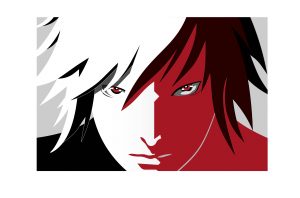 Sales of the Japanese graphic novels and comic books known as manga have been falling inside Japan itself since the mid 1990s—a fact that Carl Horn ’91, manga editor for Dark Horse Comics, attributes to the long decline in the nation’s population—especially at the young end of the spectrum. “Even though Japan has the deserved reputation as a country where adults read comics, the top-selling titles are your Dragon Balls, your Narutos, your One Pieces, your Attack on Titans,” Horn says. “In other words, manga that were made for younger readers.”
Sales of the Japanese graphic novels and comic books known as manga have been falling inside Japan itself since the mid 1990s—a fact that Carl Horn ’91, manga editor for Dark Horse Comics, attributes to the long decline in the nation’s population—especially at the young end of the spectrum. “Even though Japan has the deserved reputation as a country where adults read comics, the top-selling titles are your Dragon Balls, your Narutos, your One Pieces, your Attack on Titans,” Horn says. “In other words, manga that were made for younger readers.”
What’s Next For:
Revolutions?
Syria?
Mexico?
Japan?
The United States?
Earthquake Safety?
Climate Action?
California Water?
Climate Science?
Solar Energy?
California Fruit Farming?
Technology Investing?
Nanoscience?
Digital Storage?
Artificial Intelligence?
Cyber-Threats?
Social Media?
Space Exploration?
Science Museums?
The Sagehen?
Biodiversity?
The Blind?
Big Data?
Mental Illness?
Health Care Apps?
Maternity Care?
Etiquette?
Ballroom Dance?
Thrill Seekers?
Outdoor Recreation?
Funerals?
Writers?
Movies?
Manga?
Alt Rock?
Women in Mathematics?
That means the future of the manga industry is increasingly outside Japan, Horn says. And for American readers, that offers both pluses and minuses.
On the plus side, manga creators are starting to become more accessible to their foreign readers—appearing slightly more often at conventions and responding on social media. On the minus side, however, Horn worries that their stories may lose some of their Japanese flavor.
“The fans don’t necessarily want to see manga becoming ‘more American,’ whatever that means,” he says, adding that for most manga readers, the cultural differences are an important part of the attraction. “However, what they would like to see, I think, are more personal connections with the creators—that is, Japanese creators getting more involved with their English-language readership.”
One thing he doesn’t think will change is the special attraction manga holds for people who feel like outsiders. “Manga is a medium where people who wouldn’t be cast as heroes in traditional American stories, can be,” he says. “You don’t necessarily have to look the part. People considered oddballs, you know, people who dress weird, people with weird hair—in manga they can still be the heroes of an action epic.”
